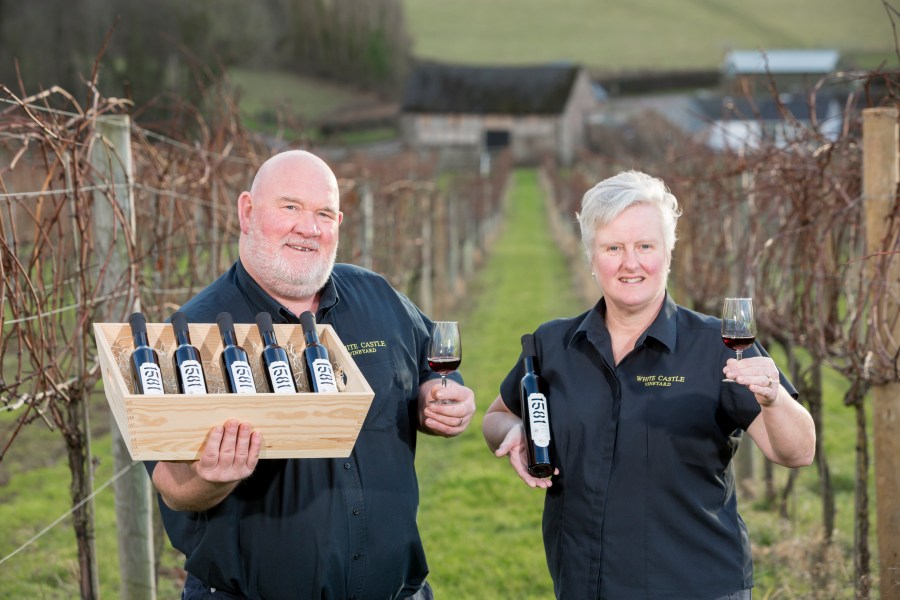Award-winning Monmouthshire vineyard, White Castle, has successfully launched Wales’ first fortified wine.
1581, which has been named after a grade II listed Tudor barn at the vineyard, has been produced from the Regent variety, in a similar style to Port and has an alcohol by volume, abv, of 19%, having been aged for four years.
After years of planning by White Castle’s owners Robb and Nicola Merchant, the 2014 harvest brought with it grapes of a high enough quality and quantity that allowed the Merchants to put aside a 225-litre barrel of Regent wine to create 500 bottles of the fortified wine.
“Since we’ve had the vineyard it has always been a dream of ours to create a Welsh fortified wine,” said Robb Merchant, owner of White Castle and chairman of the Welsh Vineyards’ Association. “We needed to have a quality grape and were just waiting for the right harvest and volume to be able to do it. The result is a drink that is light in texture, very fruity, and reflects what we do at White Castle.”
While 1581 is currently only available direct from the cellar door located in Llanvetherine, just outside Abergavenny, a barrel of Regent is now being put away after each harvest and stored at the Three Choirs, in Newent, Gloucestershire, where all White Castle’s wines are produced.
“We have had some really good feedback so far,” said Nicola Merchant. “It has been tremendously well received and even though we only launched 1581 in December we have already seen people return to the vineyard to pick up more of the limited-edition release.”
1581 joins White Castle’s range of red, white, rosé, and sparkling wine which, since the vineyard’s first harvest in 2011, have reaped numerous national wine awards.
The Tudor barn which the fortified wine is named after, has also been restored by the Merchants with help from a local building preservation charity and is now used for a variety of events including talks and courses about viticulture, as well as open days and weddings.
“It is a wonderful building and an integral part of our vineyard,” said Mr Merchant. “It was natural that we took the date of its construction for the name of our Welsh fortified wine. It has been an important building in the locality for centuries and was featured by Lord Raglan in his book on ancient buildings in Monmouthshire.”




